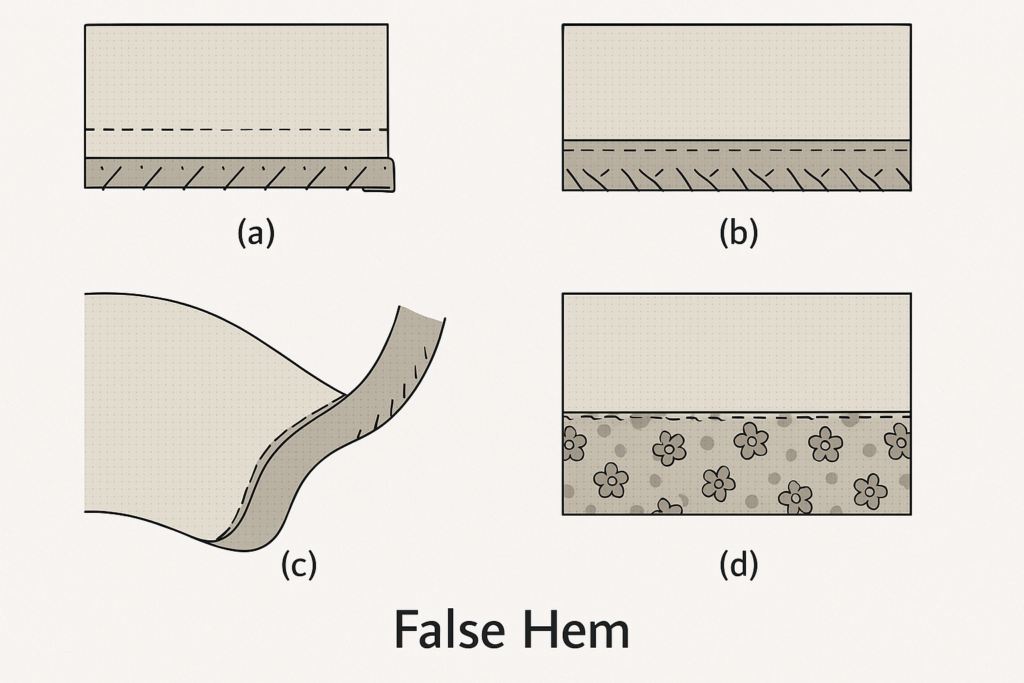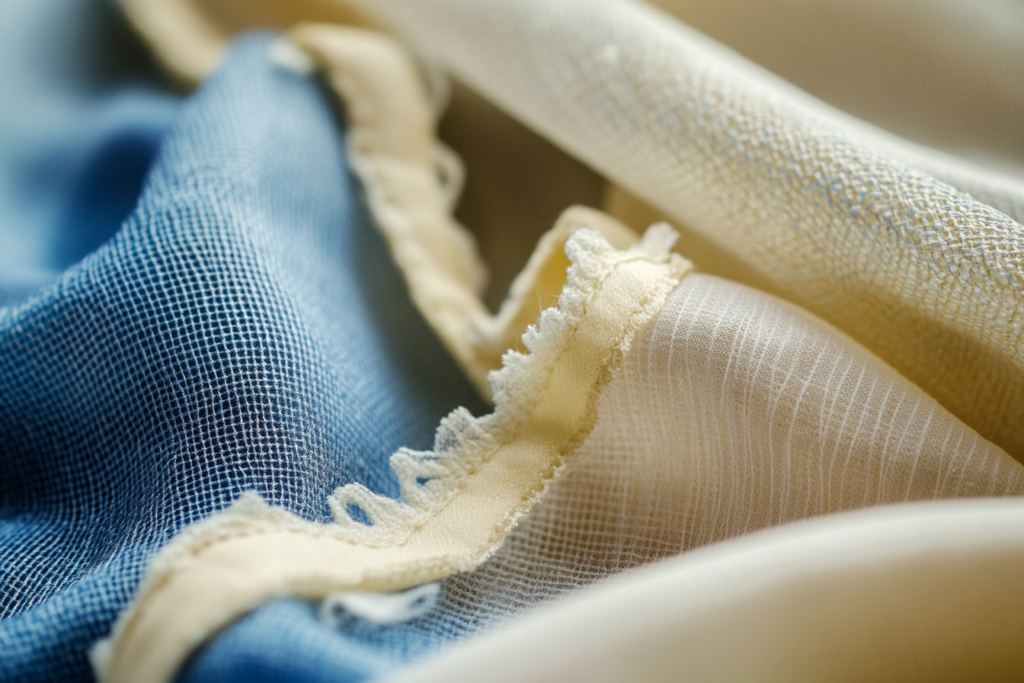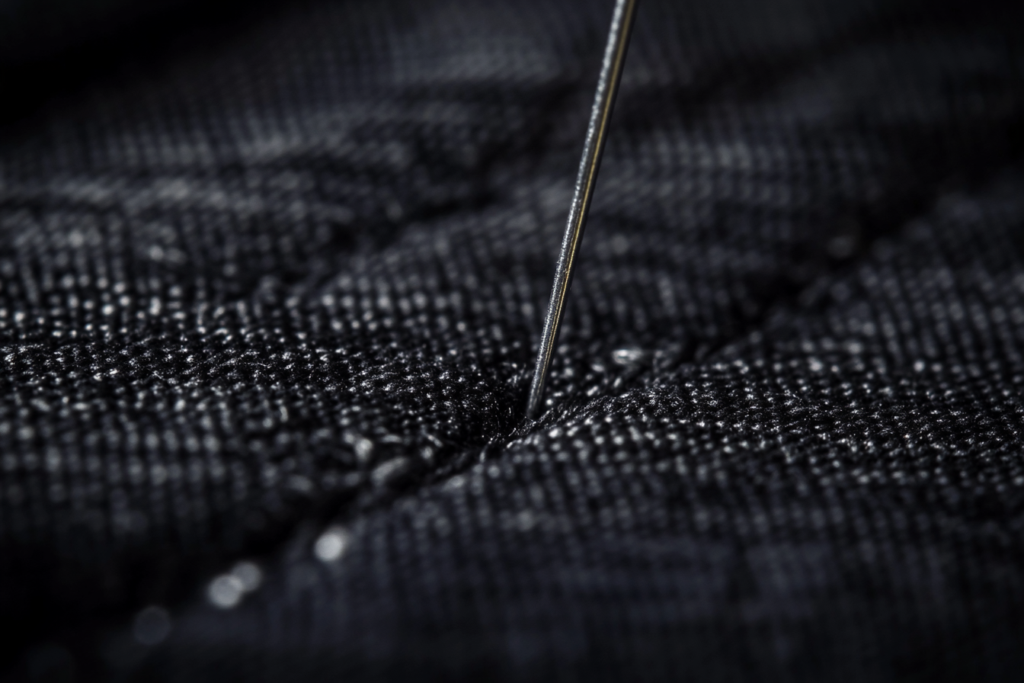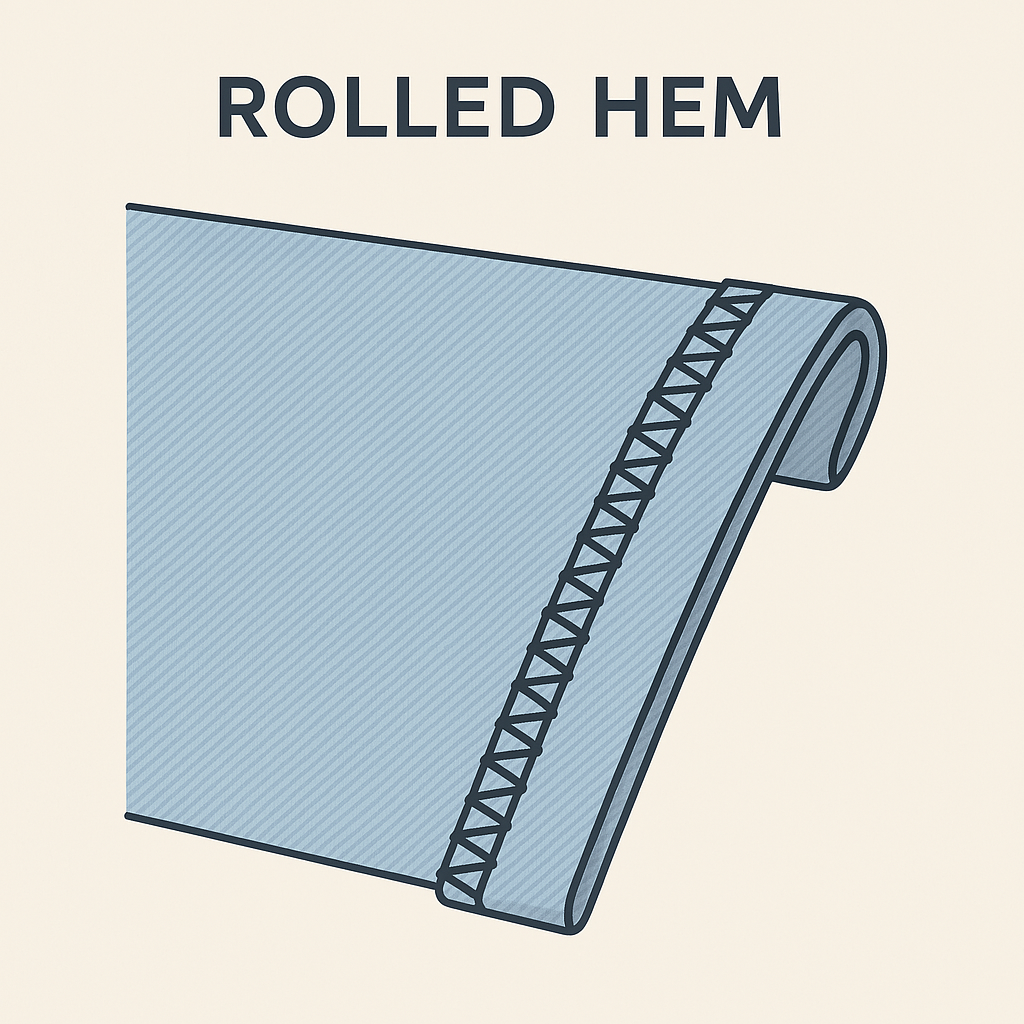False Hem in Garment Construction: Function, Fabric Use & Decorative Value
🧵 What is a False Hem?
A false hem is a decorative and functional hemming technique that involves using a bias-cut fabric strip—often silk or woven fabric—sewn onto the edge of a garment. Unlike standard hems, false hems do not rely solely on folding the garment fabric itself. Instead, an additional strip is attached to reduce bulk, enhance flexibility on curves, or add decorative contrast.
As shown in Figure 10.6, false hems are particularly useful for curved or heavy garments and can serve both aesthetic and structural purposes.
🔍 Characteristics of a False Hem
🔹 Bias-Cut Strip
- One side of the strip is folded and sewn to the garment’s edge.
- Provides flexibility to adapt to curves or complex shapes.
- Commonly made from silk, cotton, or printed woven fabric.
🔹 Ideal for Curved Edges
- Allows for a smooth finish without puckering or pulling.
- Perfect for armholes, hem curves, necklines, and circular hems.
🔹 Decorative Application
- The bias strip may be placed on the outside to serve as a contrast trim.
- Can be made from printed or contrasting fabric for design enhancement.
- Example: Figure 10.6f shows a decorative printed silk strip on a linen jacket.
🔹 Hidden Finish
- False hems may also be used to conceal raw fabric edges at cuffs or necklines.
- Offers a clean, invisible look while maintaining garment durability.
🪡 When to Use a False Hem
✅ For garments made from heavy or thick fabrics
✅ On areas with tight curves or difficult angles
✅ To reduce bulk when folding original fabric is not feasible
✅ As a design feature for contrast or decoration
✅ When a softer drape is desired at the hem
👗 False Hem Application Table
| Garment Type | Fabric Type | Placement Area | Purpose | Decorative Use |
|---|---|---|---|---|
| Linen Summer Jackets | Heavy Linen | Center Front, Bottom Hem | Reduce bulk, contrast effect | ✅ |
| Flared Skirts | Cotton Blend / Silk | Curved Hemline | Smooth finish on curves | Optional |
| Cuff Edges | Wool / Suiting | Inside Sleeve Ends | Conceal edges, ease bulk | ❌ |
| Women’s Blouses | Chiffon / Printed Silk | Collar & Front Placket | Style detailing and color play | ✅ |
| Formal Dresses | Brocade / Taffeta | Hem & Waistline | Decorative hem finishing | ✅ |
🌟 Benefits of Using a False Hem
✔️ Reduces fabric bulk on thick or heavy materials
✔️ Smooths curved edges for professional finishes
✔️ Allows decorative expression with contrast fabric or print
✔️ Avoids wrinkling or puckering on tight curves
✔️ Preserves fabric length by not folding large sections
🔧 Tips for Perfect False Hem Application
- Always cut the hem strip on the bias to ensure stretch and curve adaptability.
- Press the hem strip carefully to avoid distortion or fraying.
- Match the fiber content of the hem strip with the garment when possible.
- For contrast hems, use decorative topstitching to enhance the visual effect.
- Finish the inside with serging or topstitching to reinforce the hemline.
📌 Summary
The false hem is an elegant solution for heavy fabrics, curved silhouettes, or decorative edge finishes. Whether used invisibly for structure or externally for style, the false hem is a versatile tool in both fashion design and garment manufacturing. With its ability to reduce fabric thickness while adding a refined detail, it is a preferred method for garments requiring both form and function.




